GROWBOTICS 2019

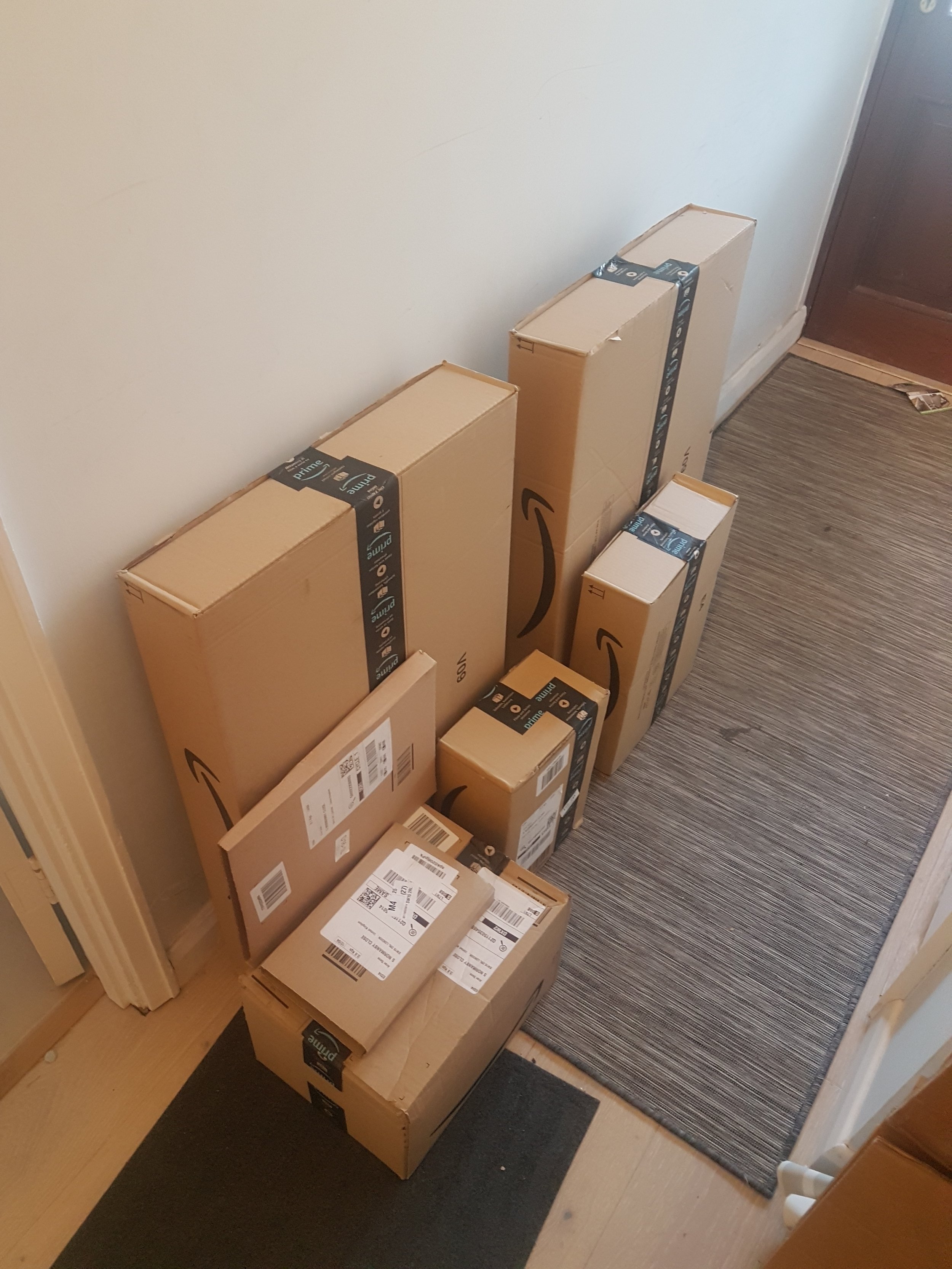
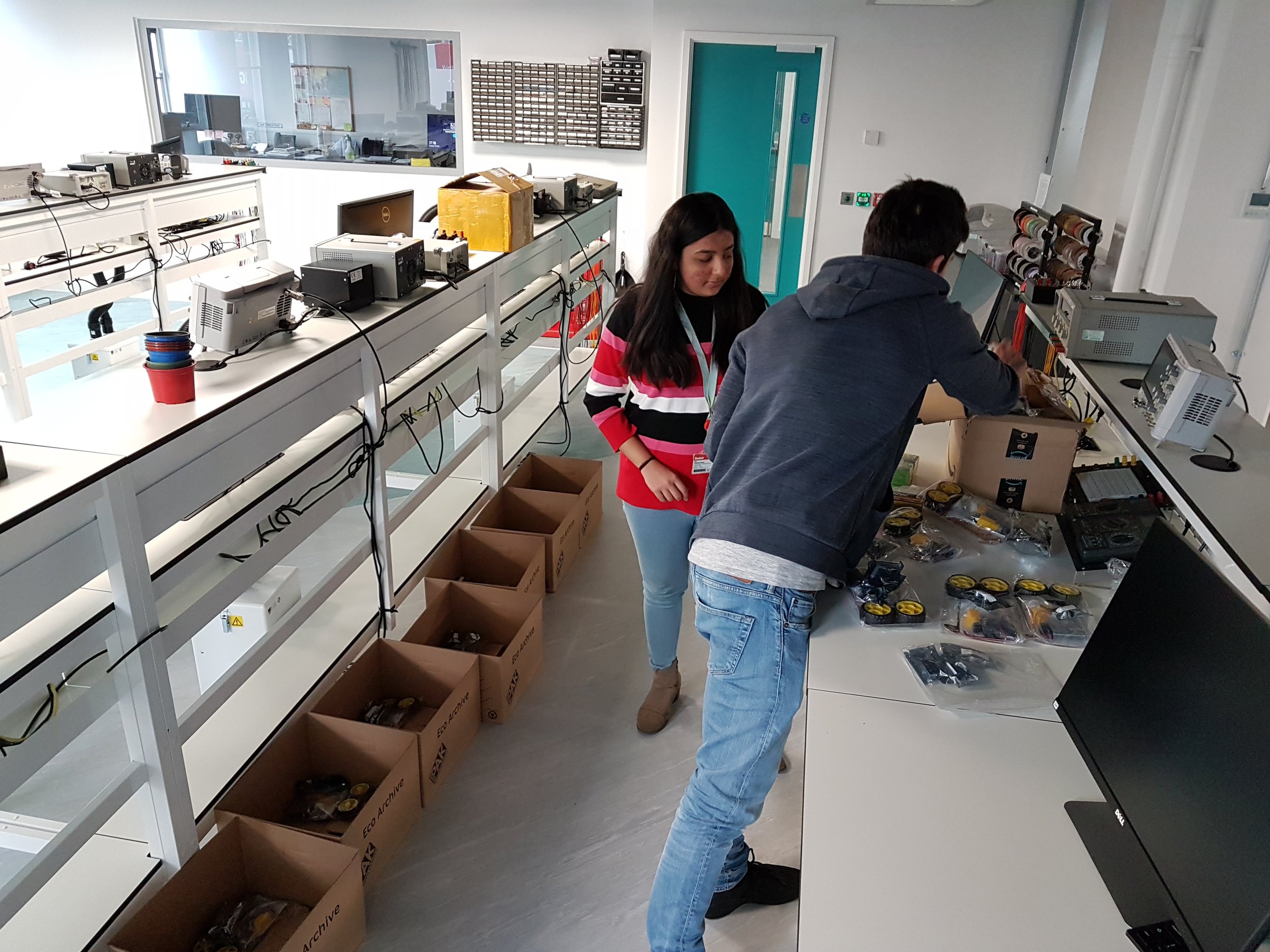
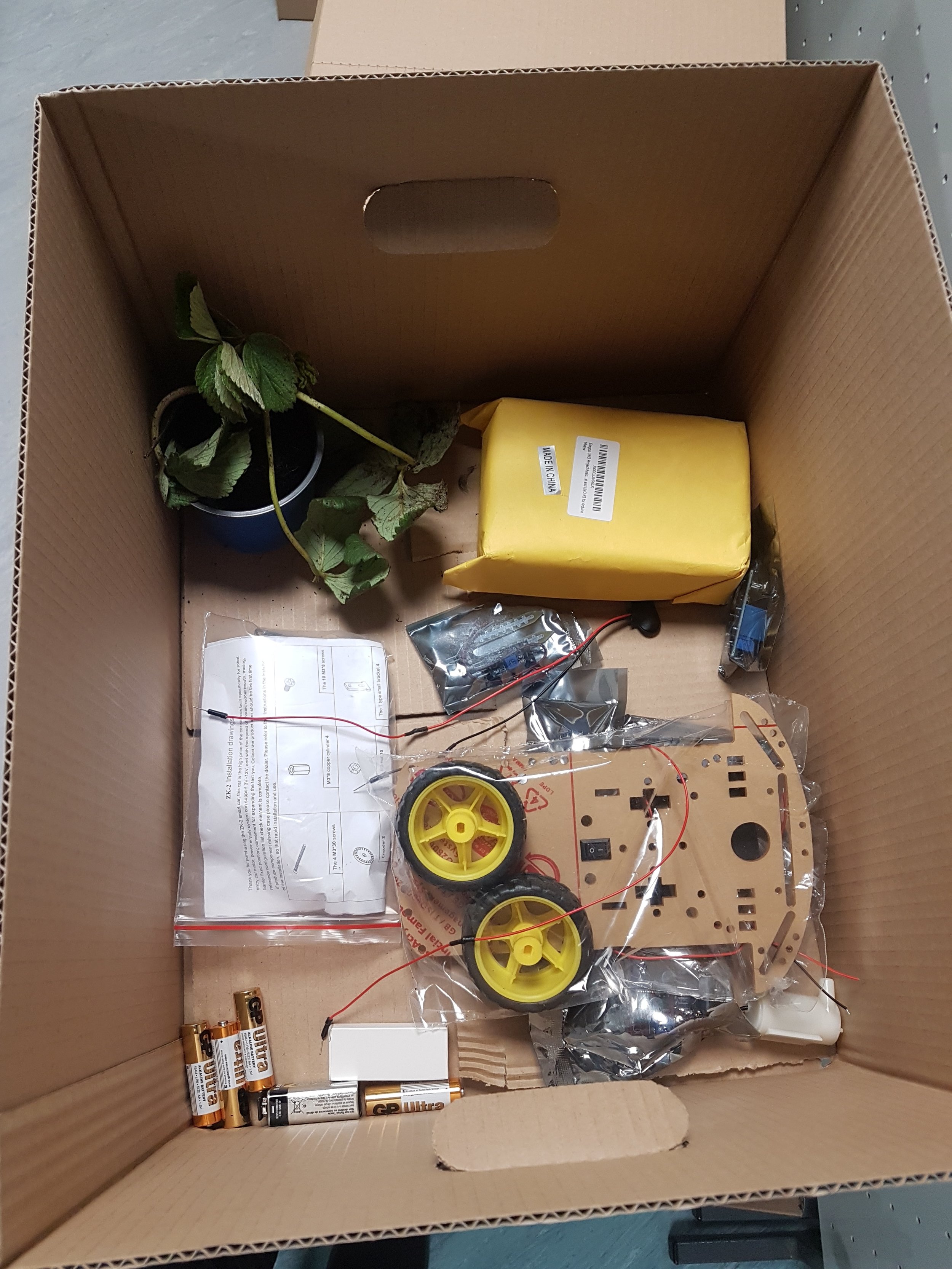
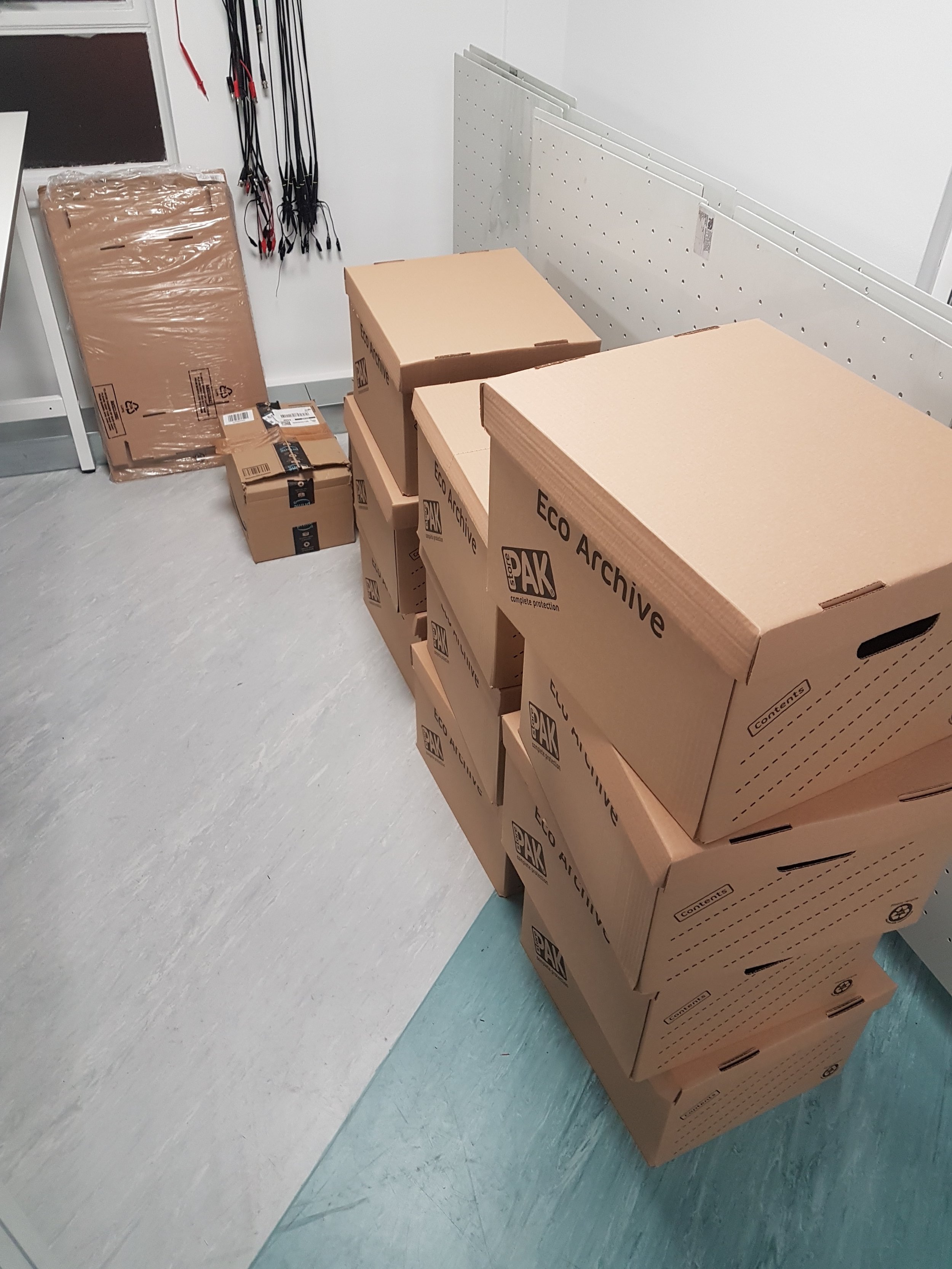
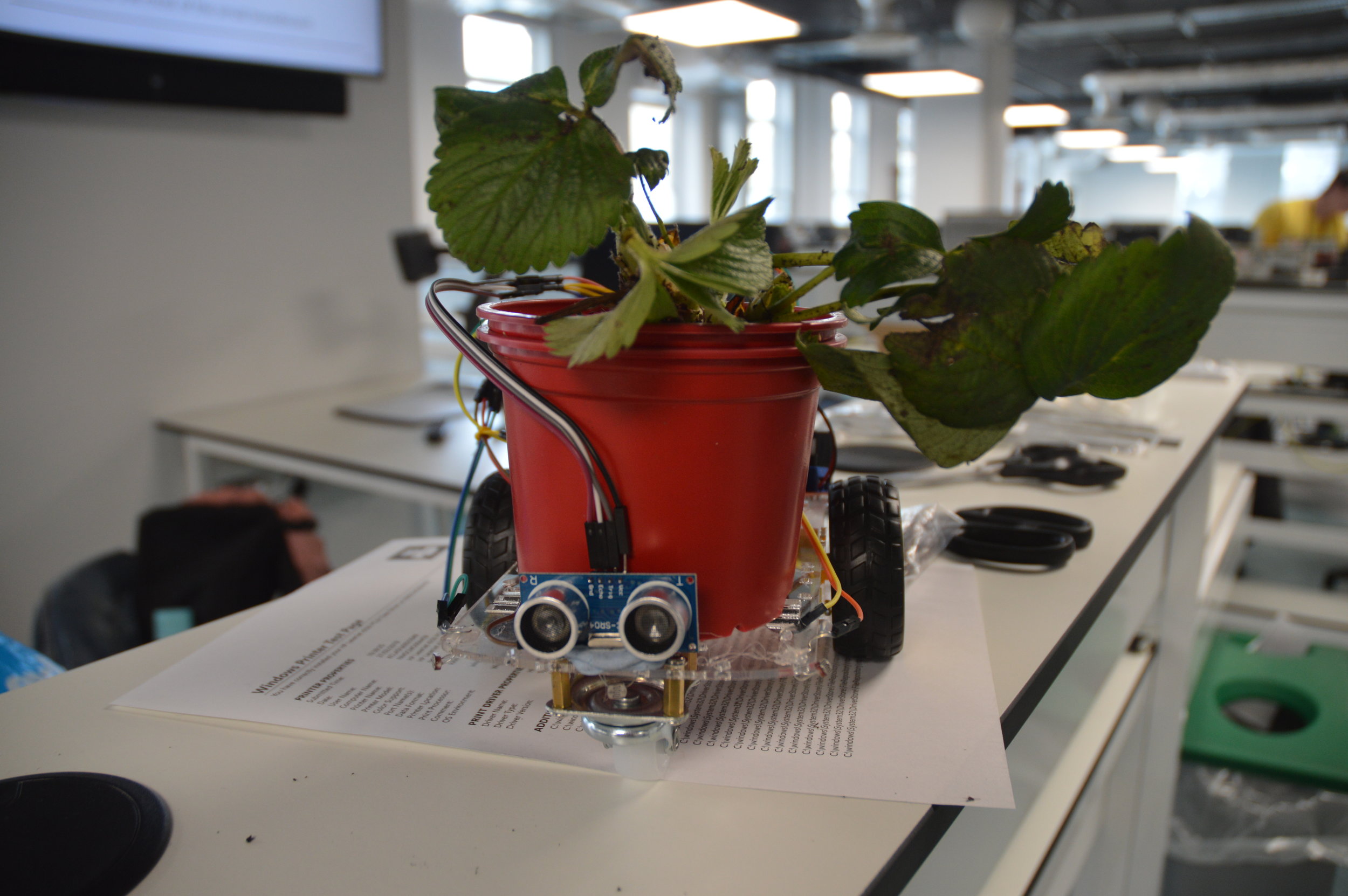
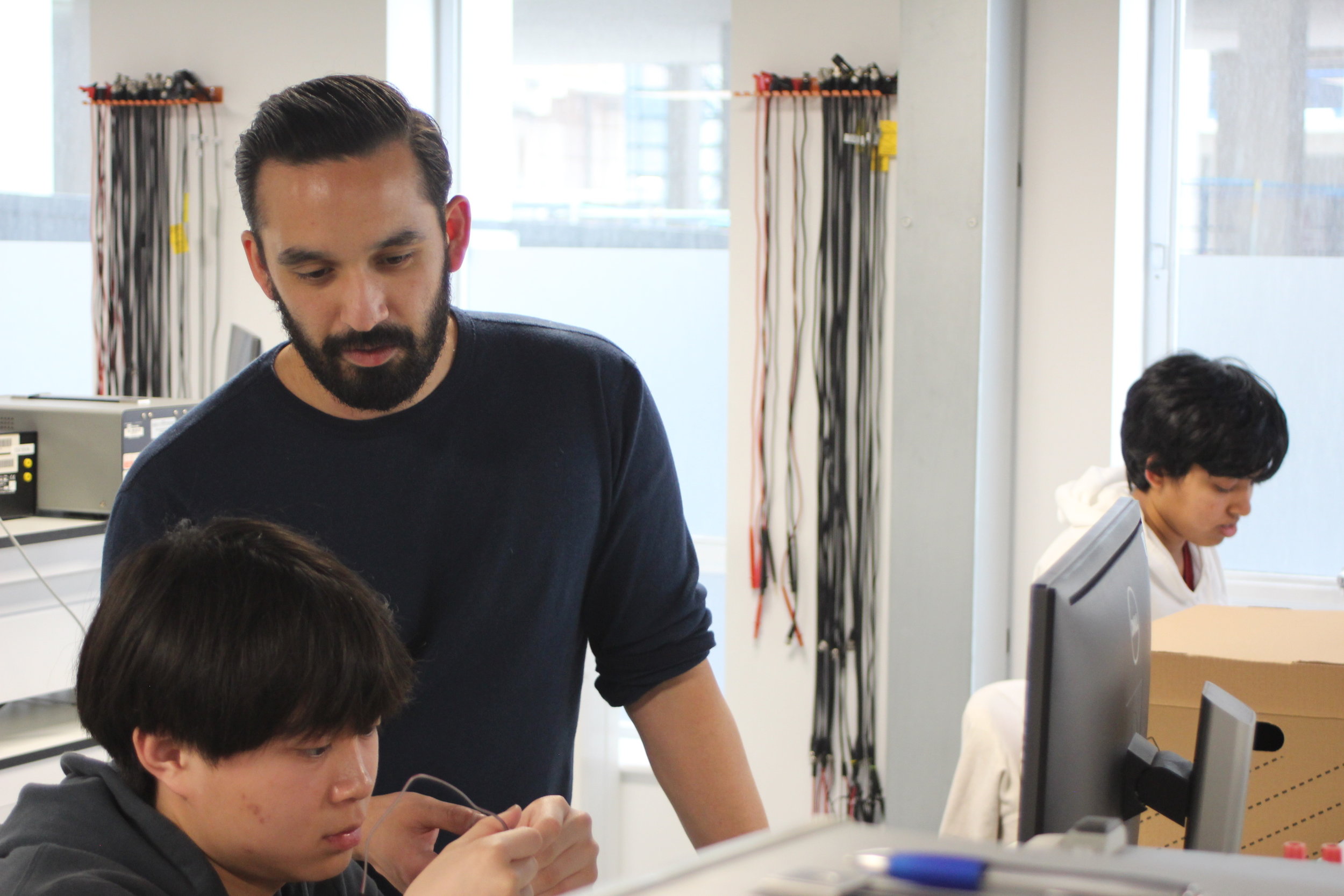
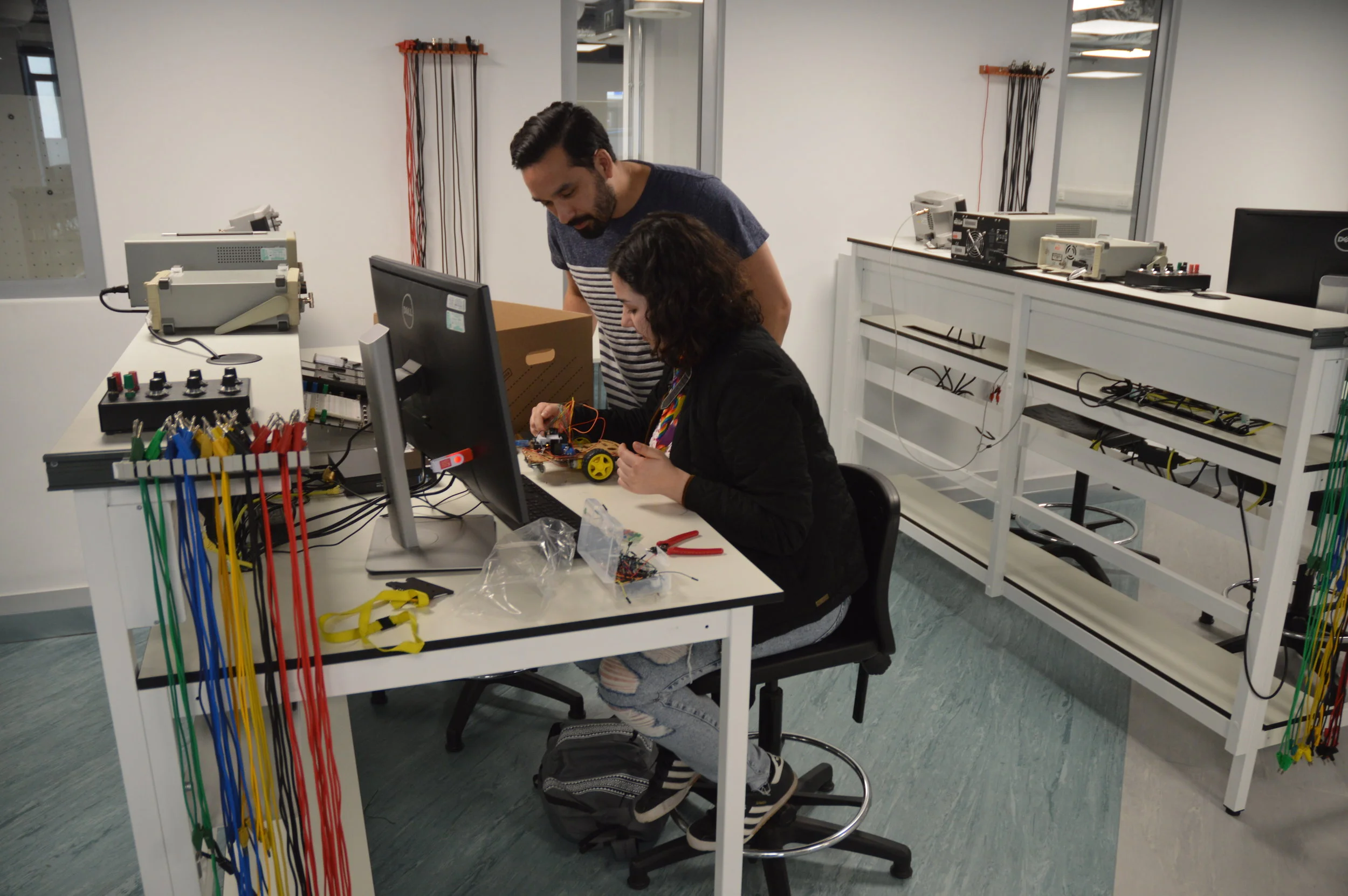

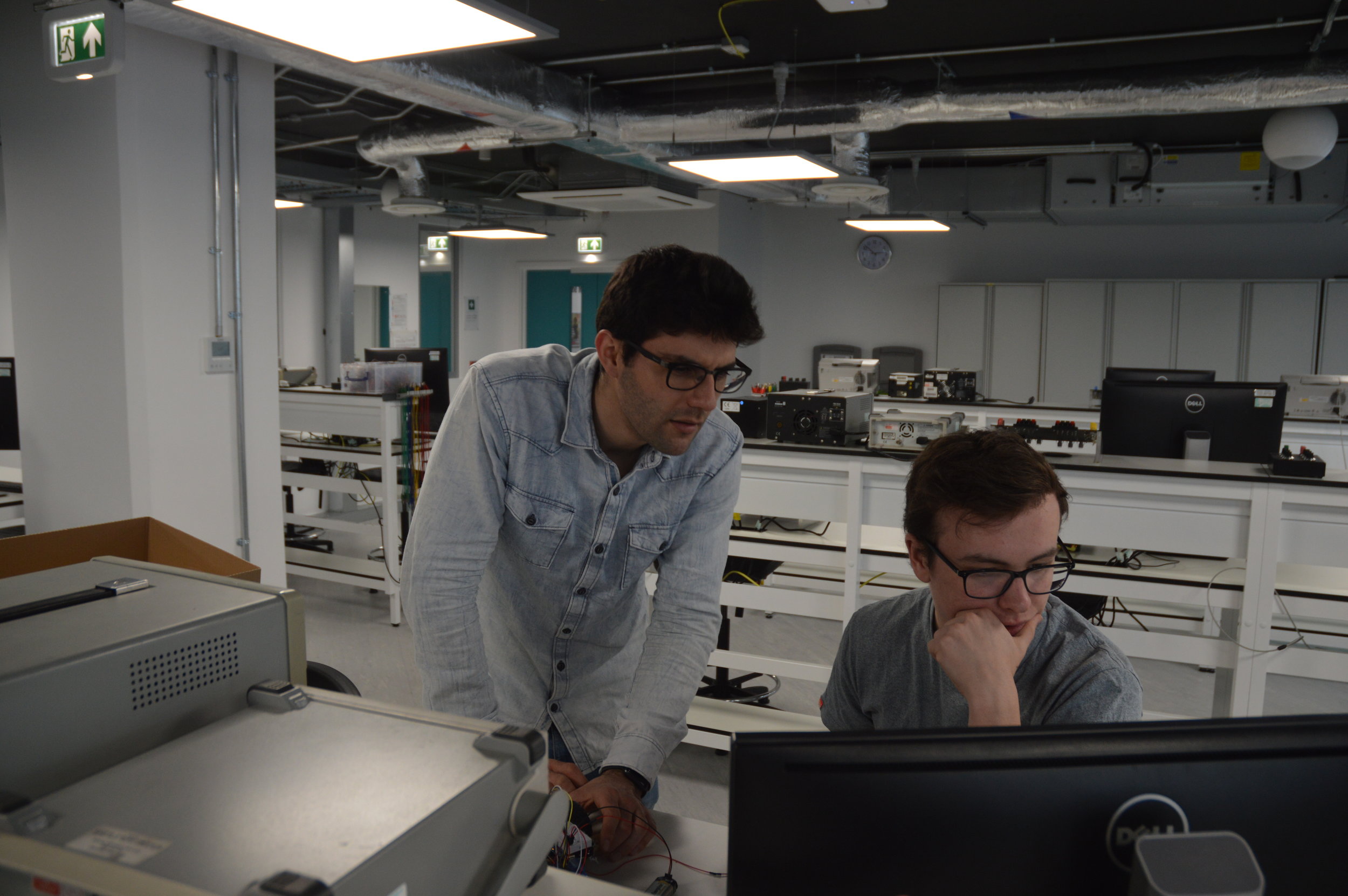

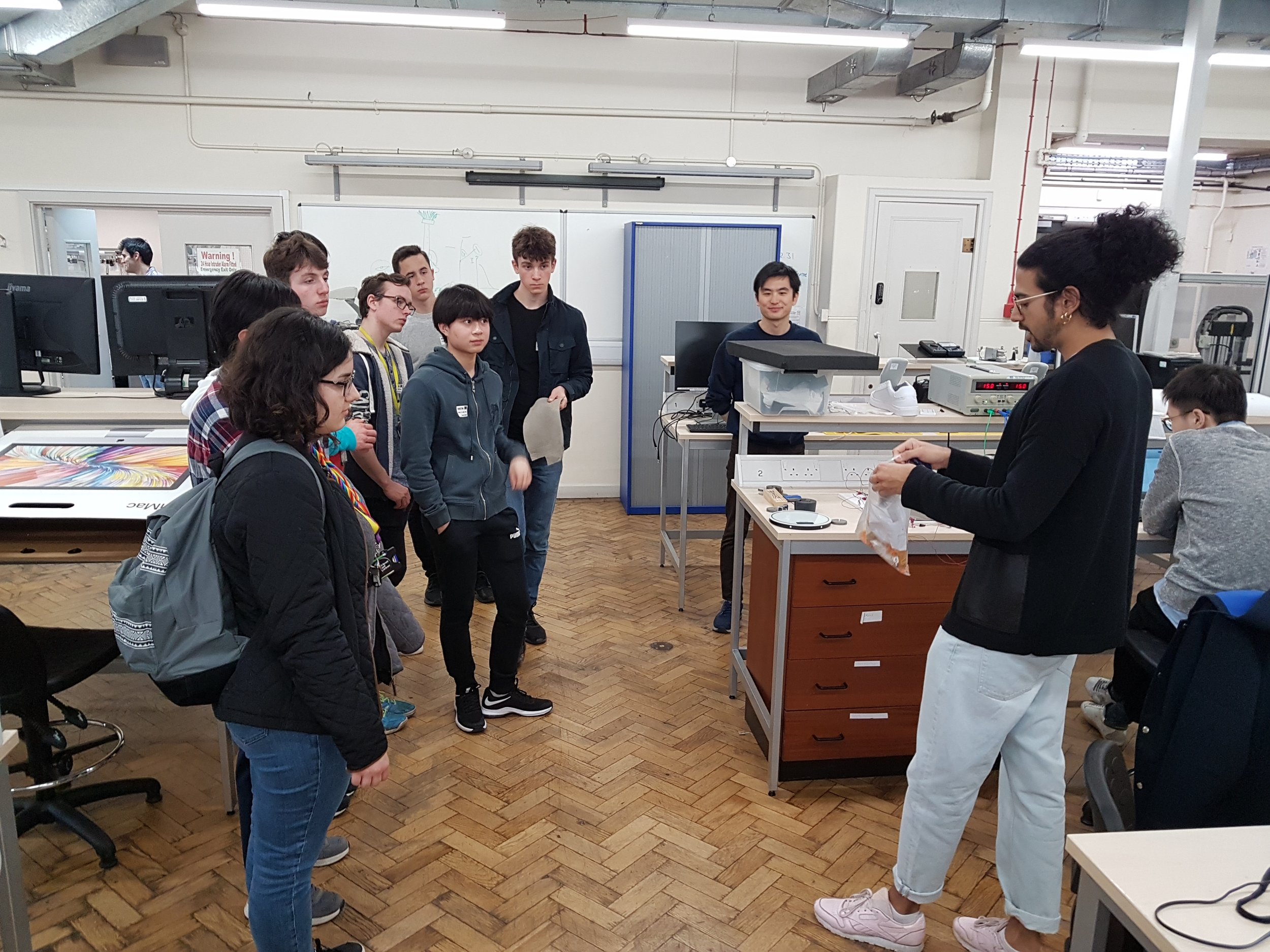
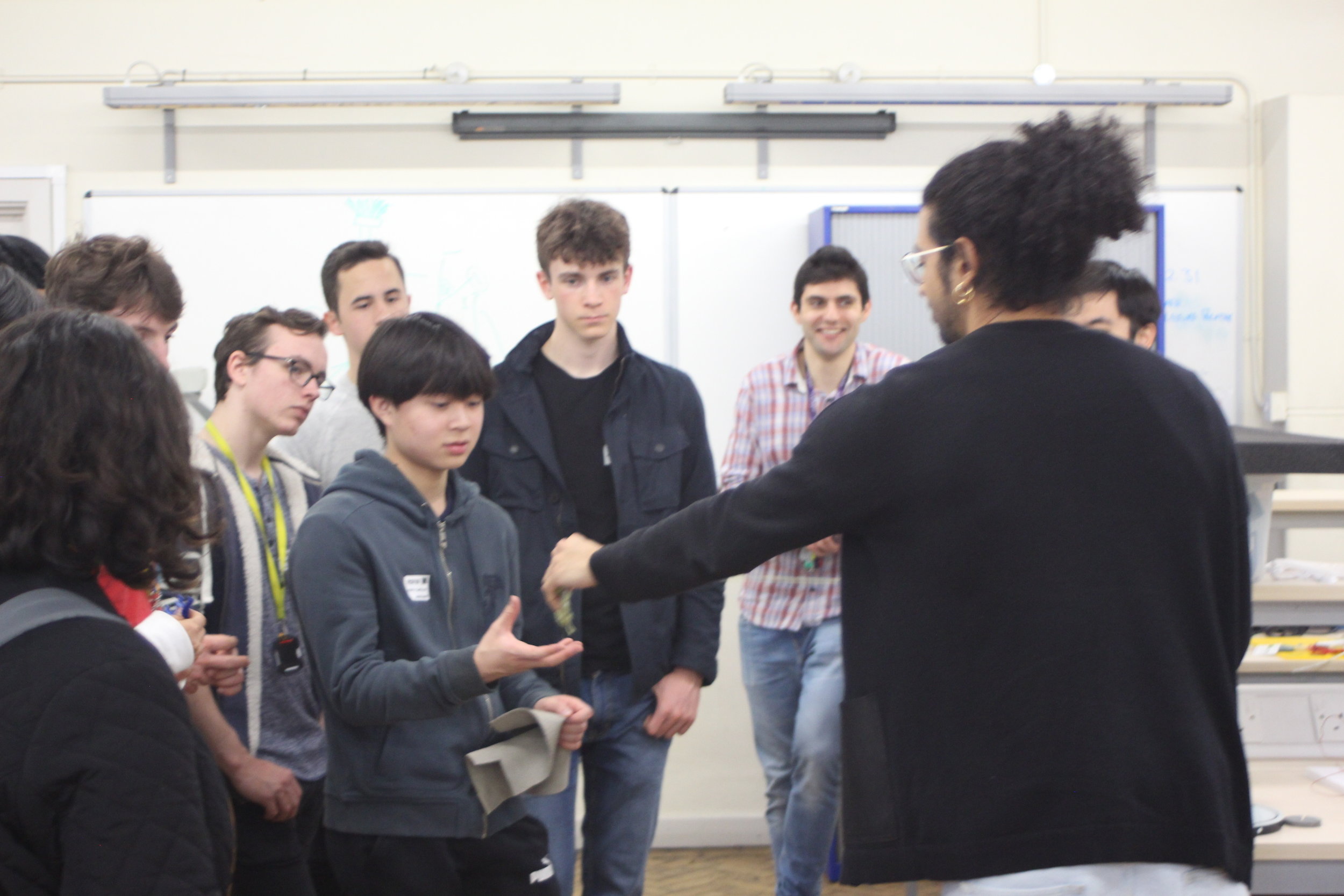
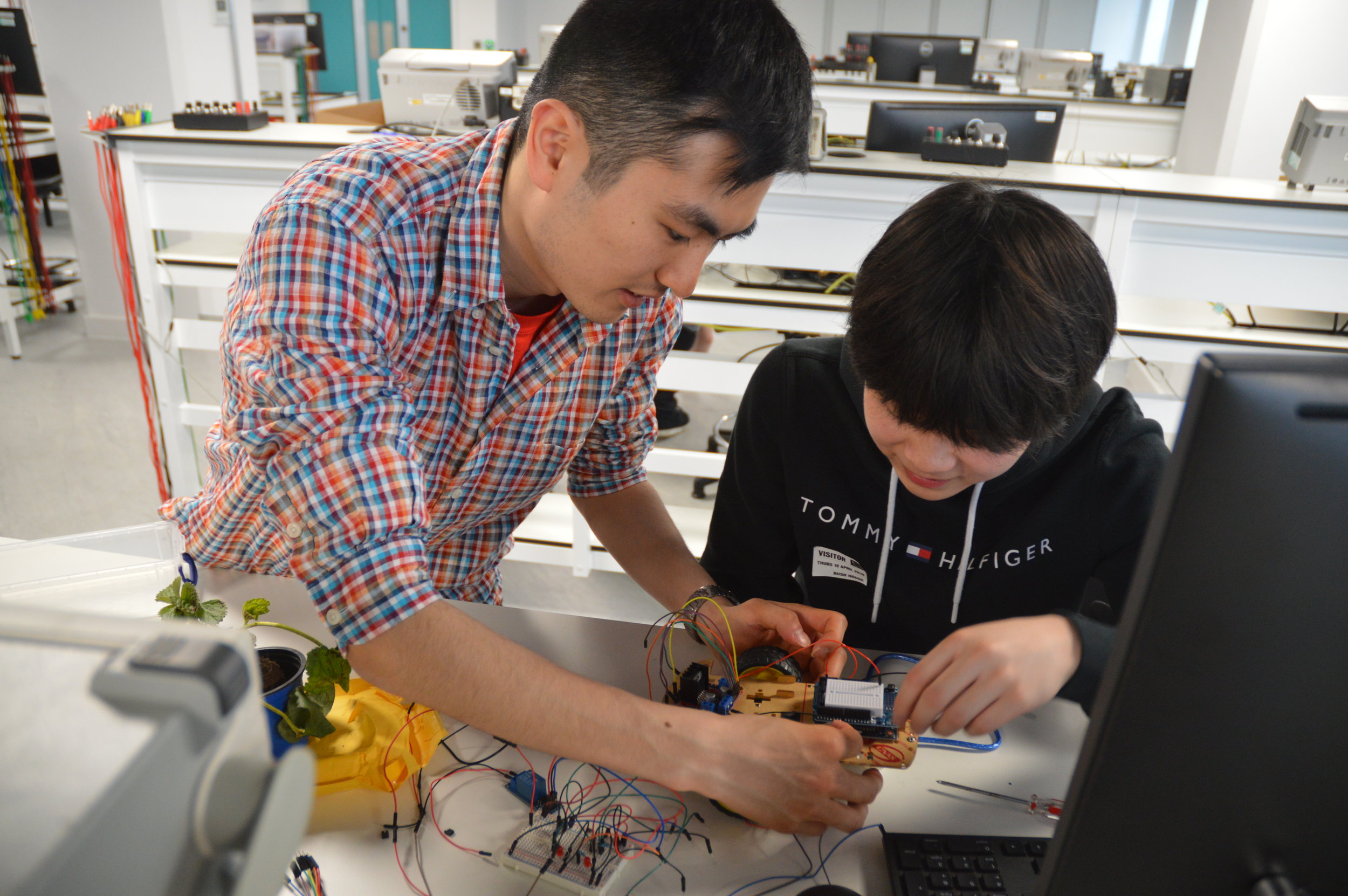
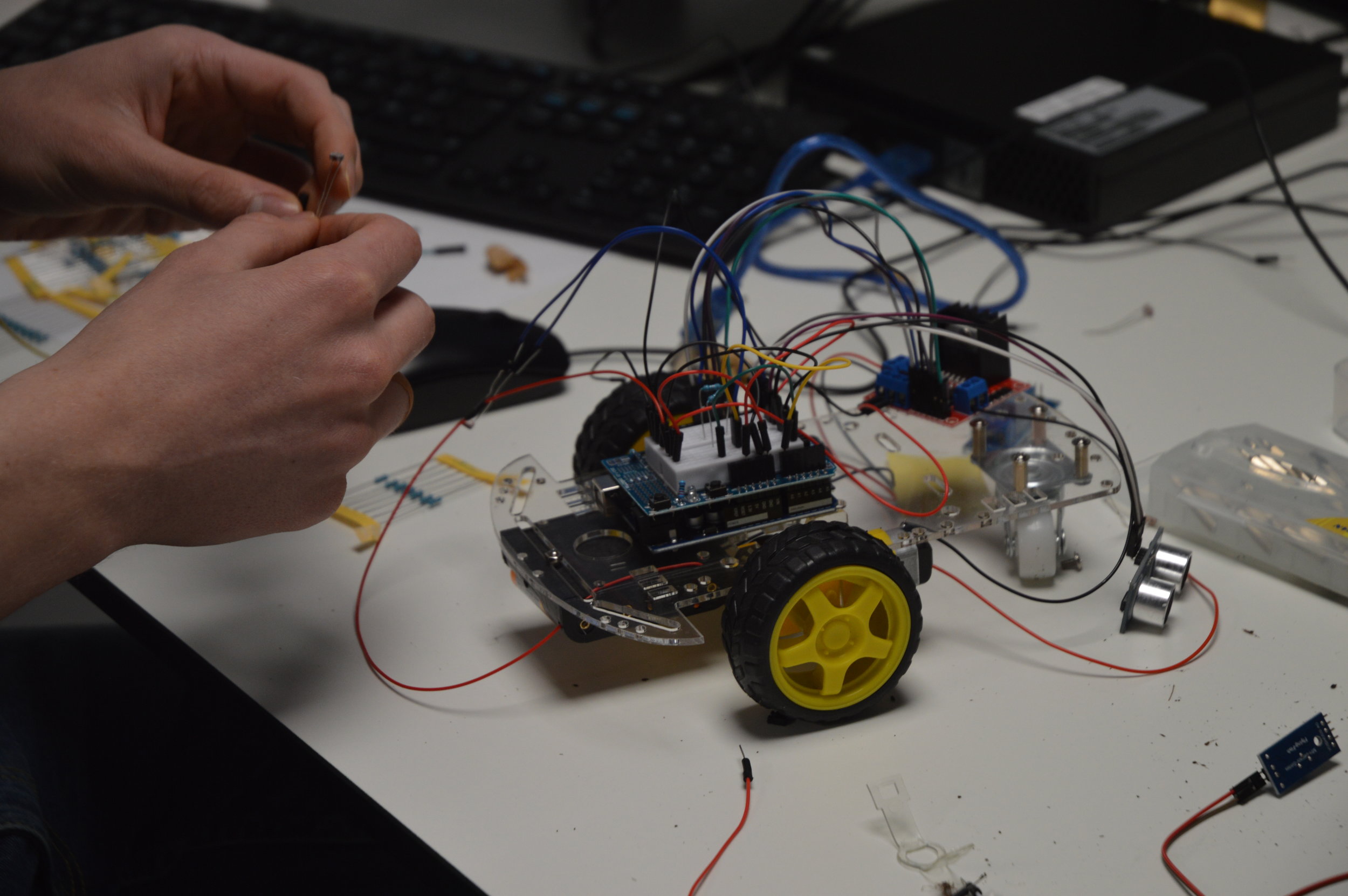
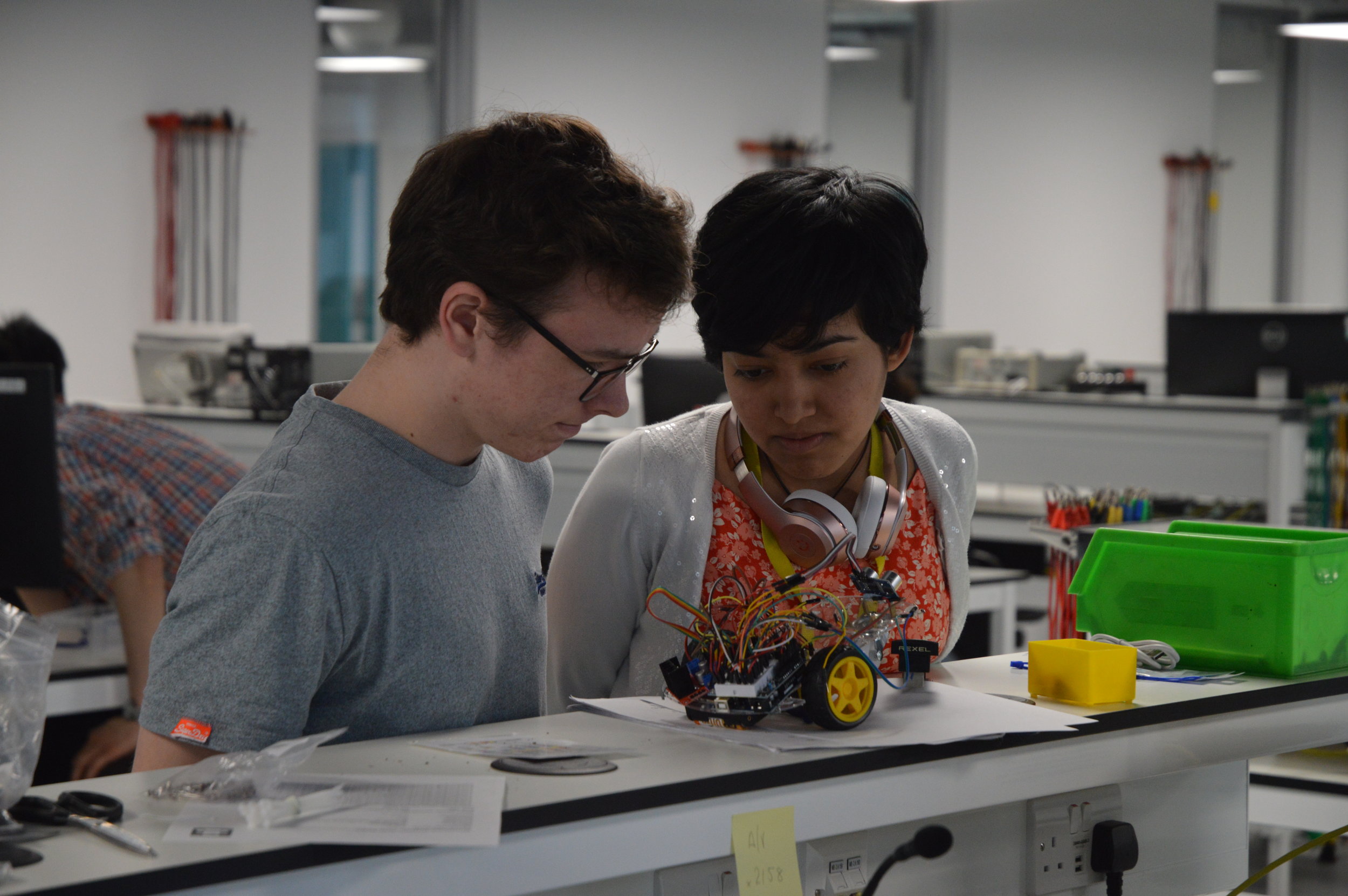
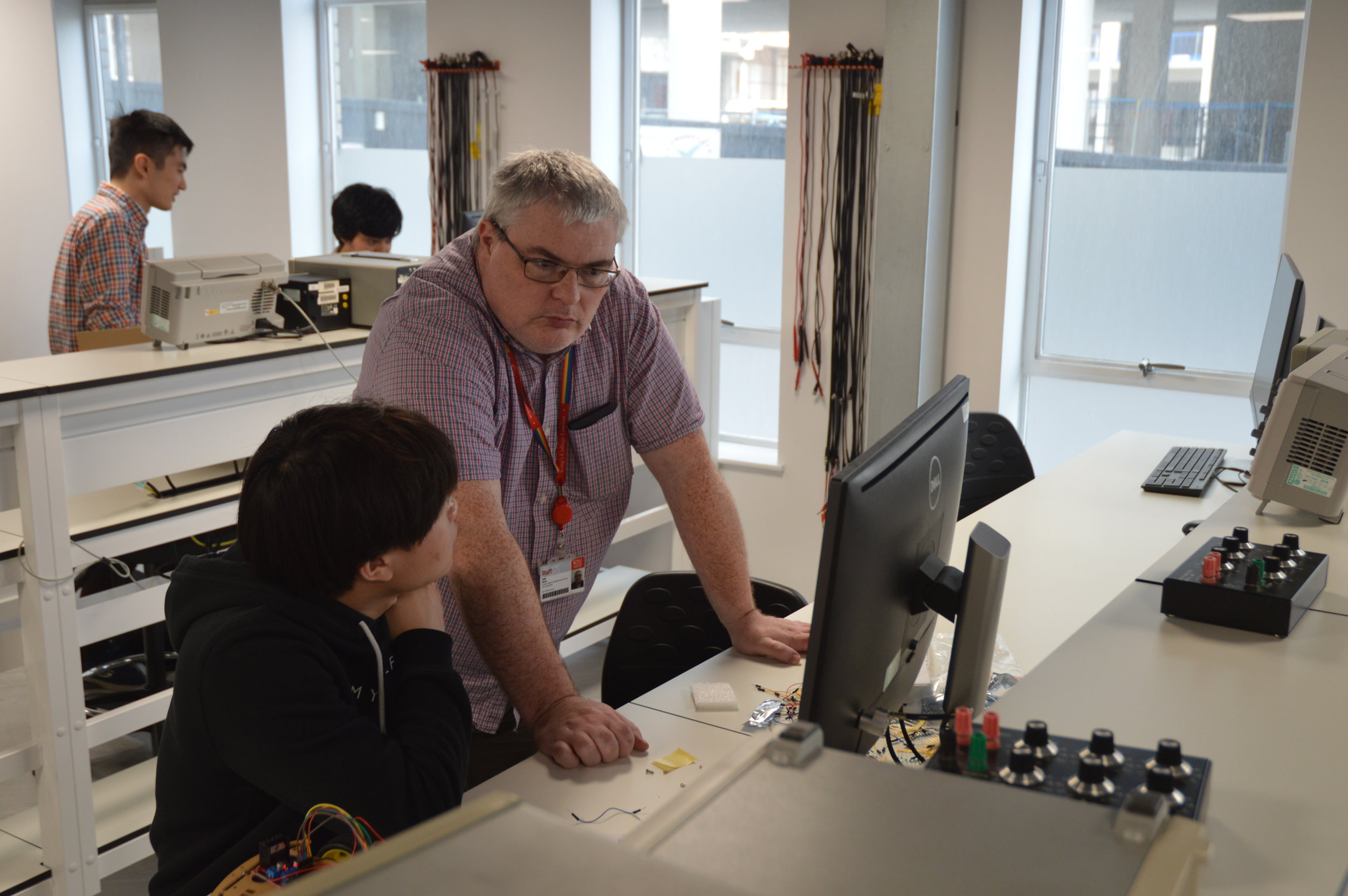
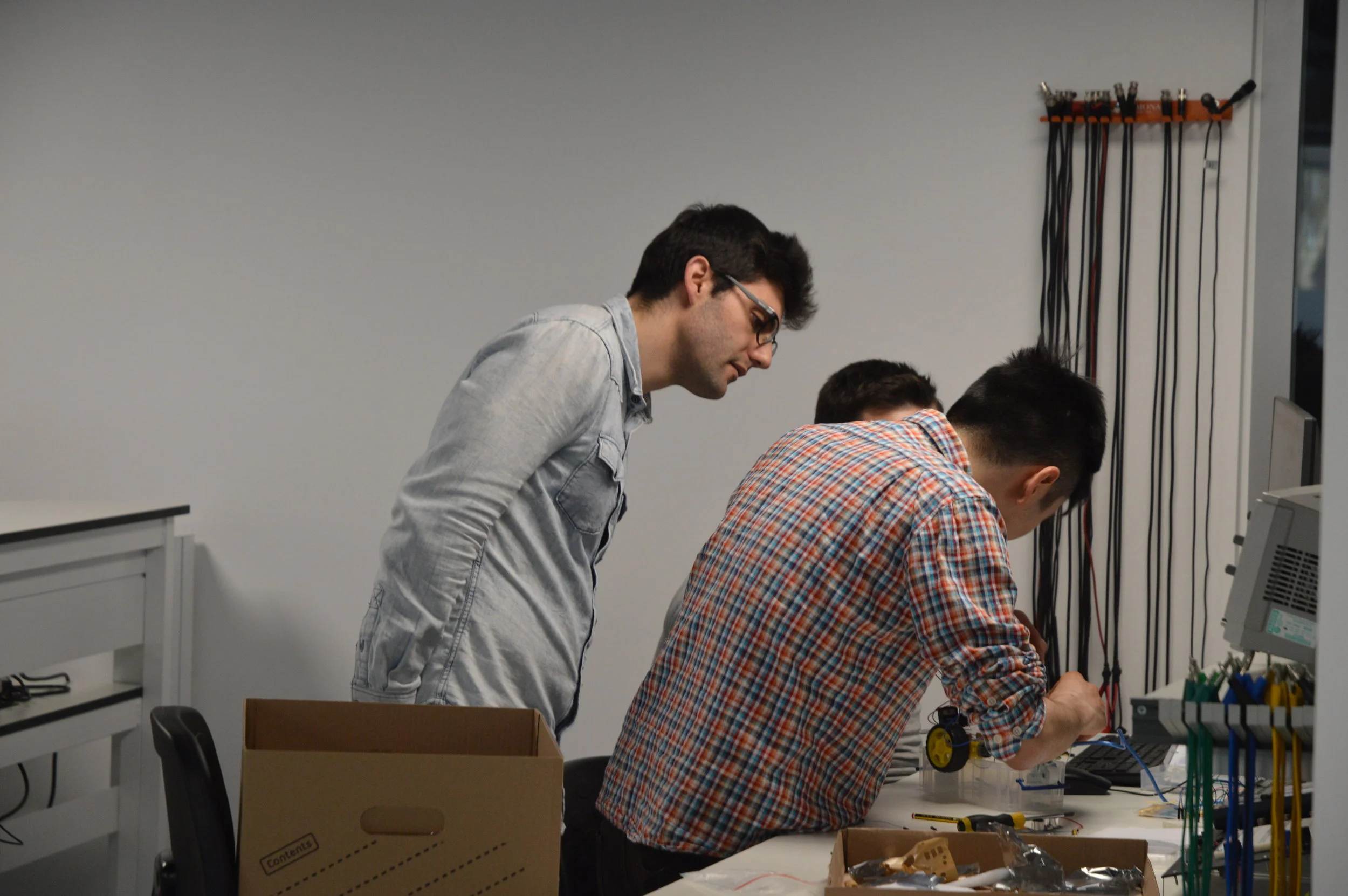
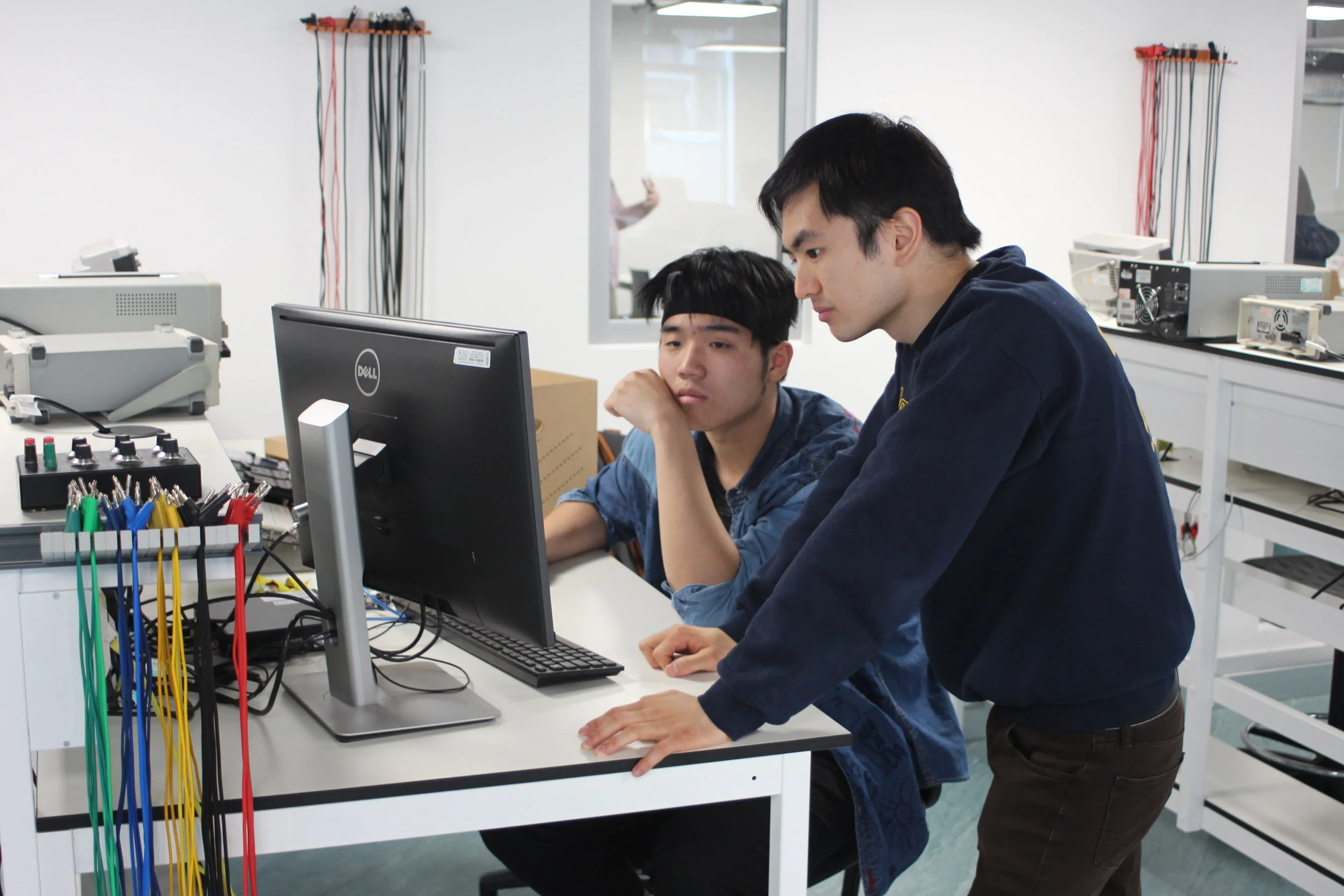
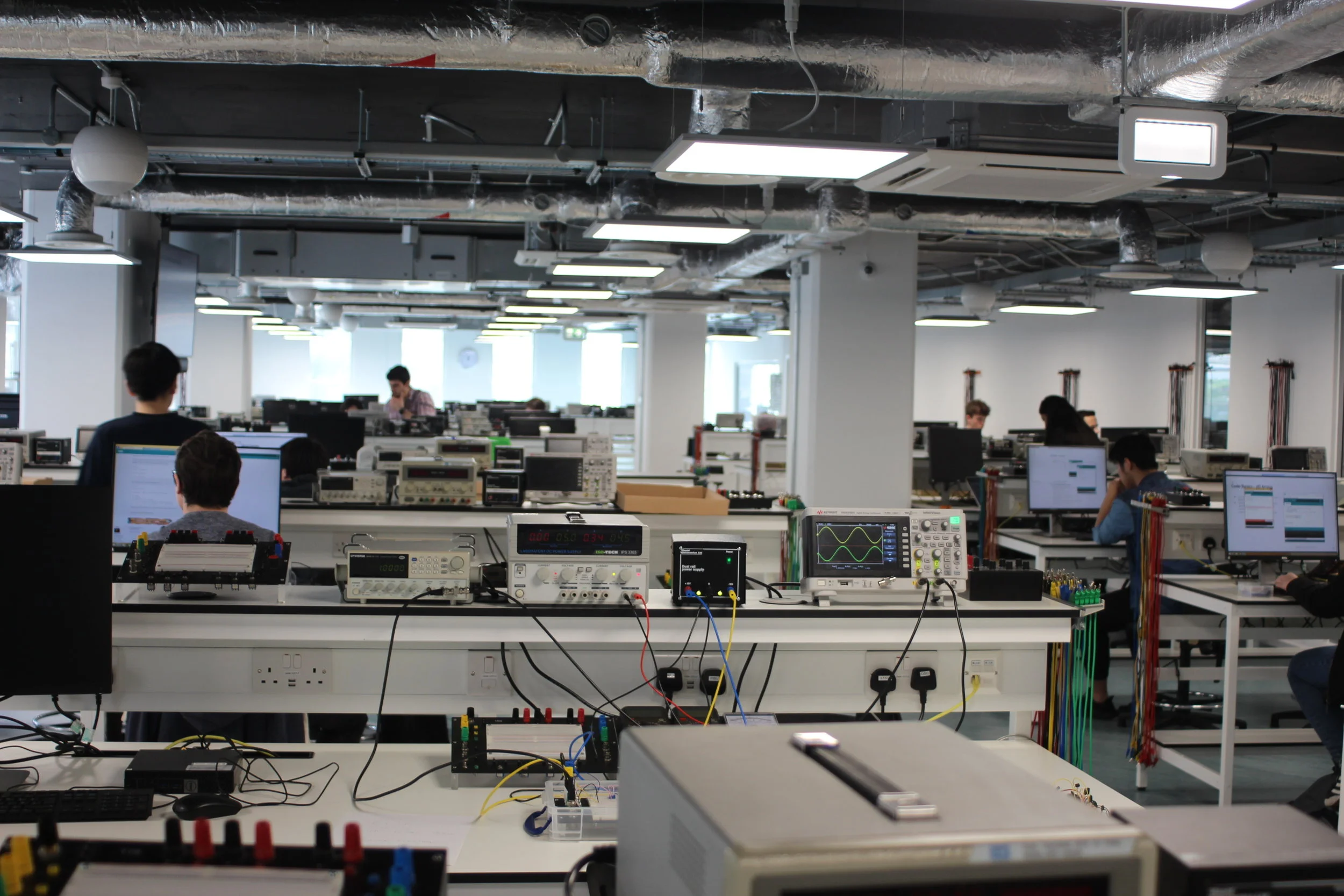
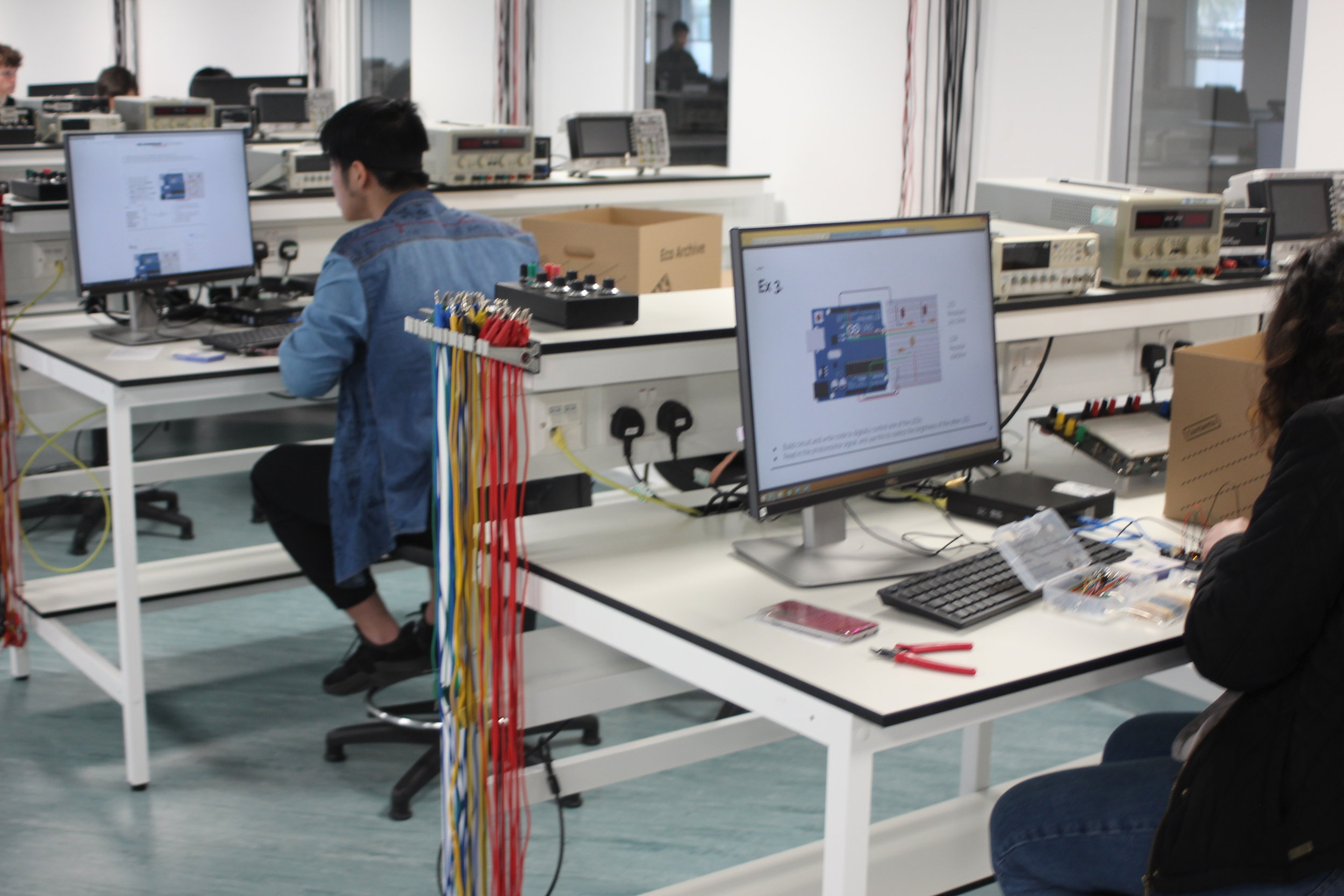
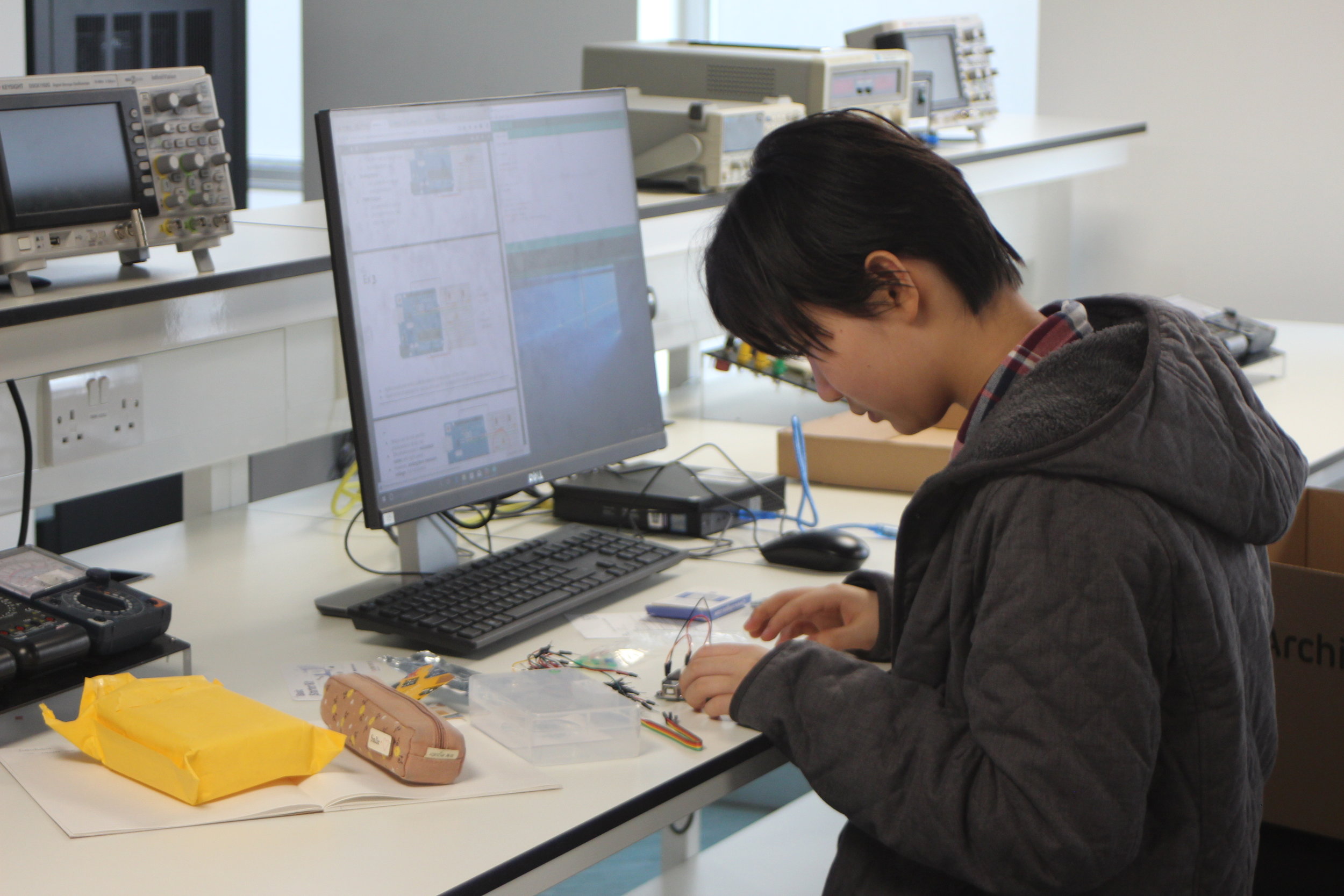
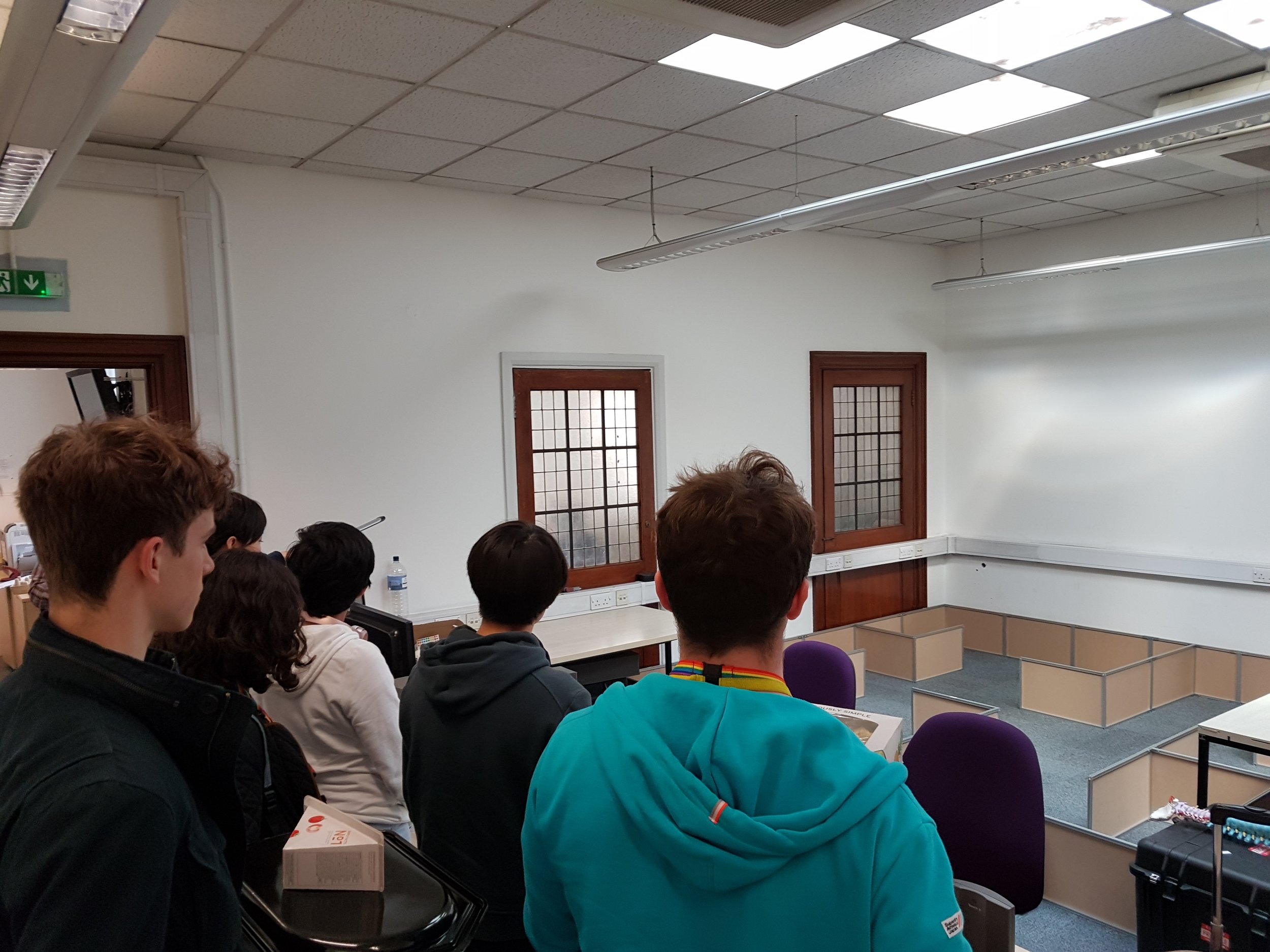
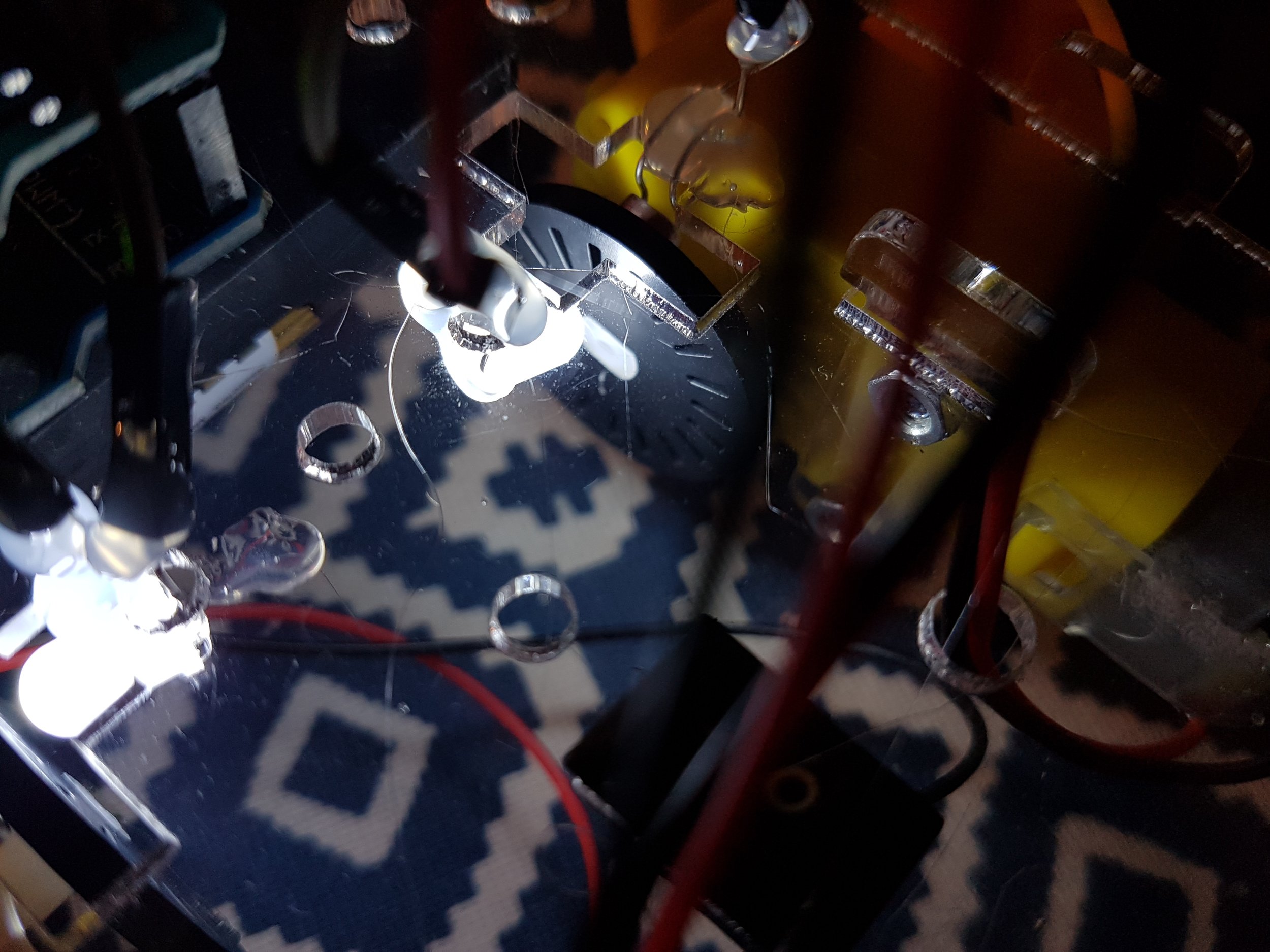
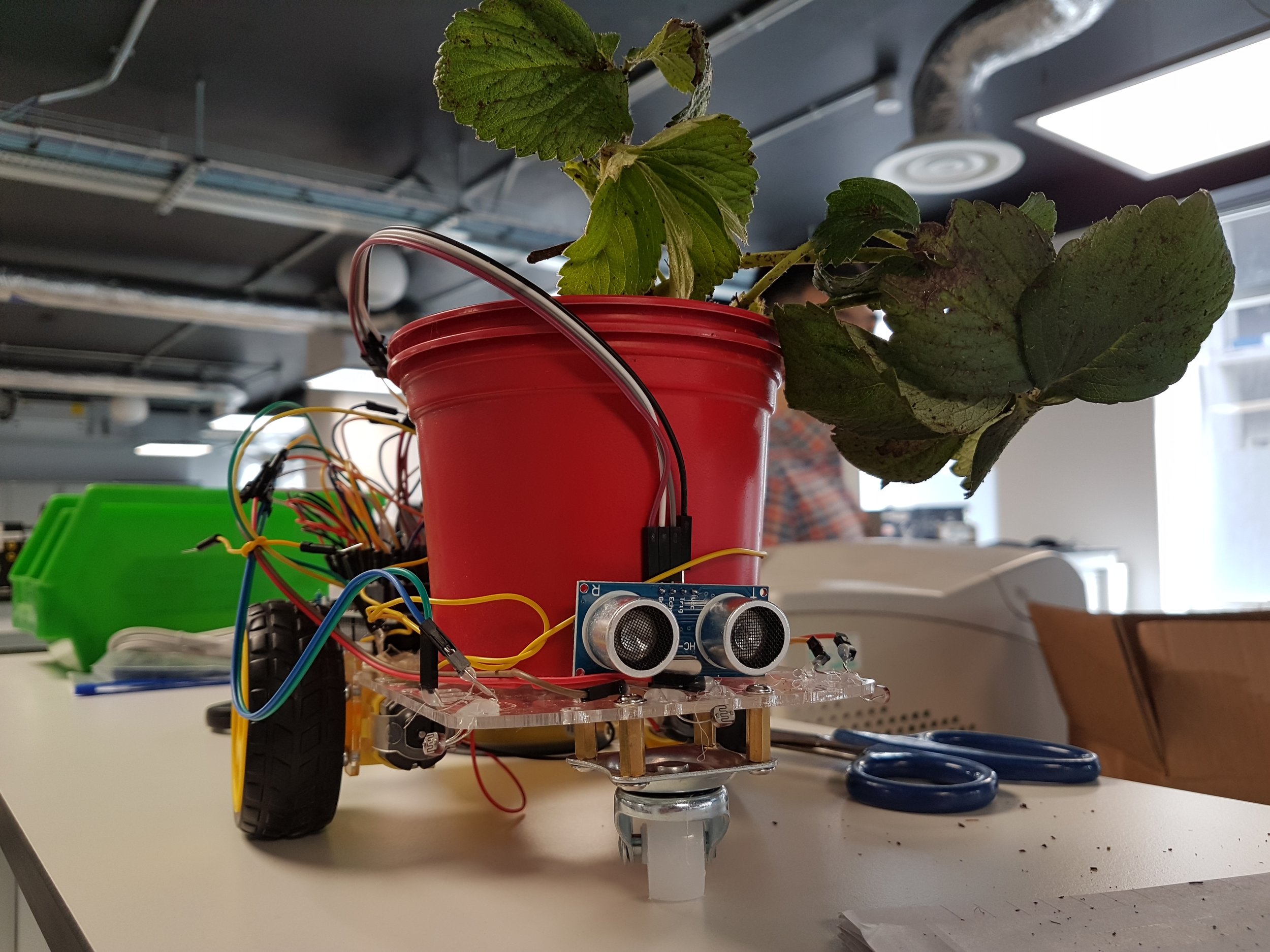
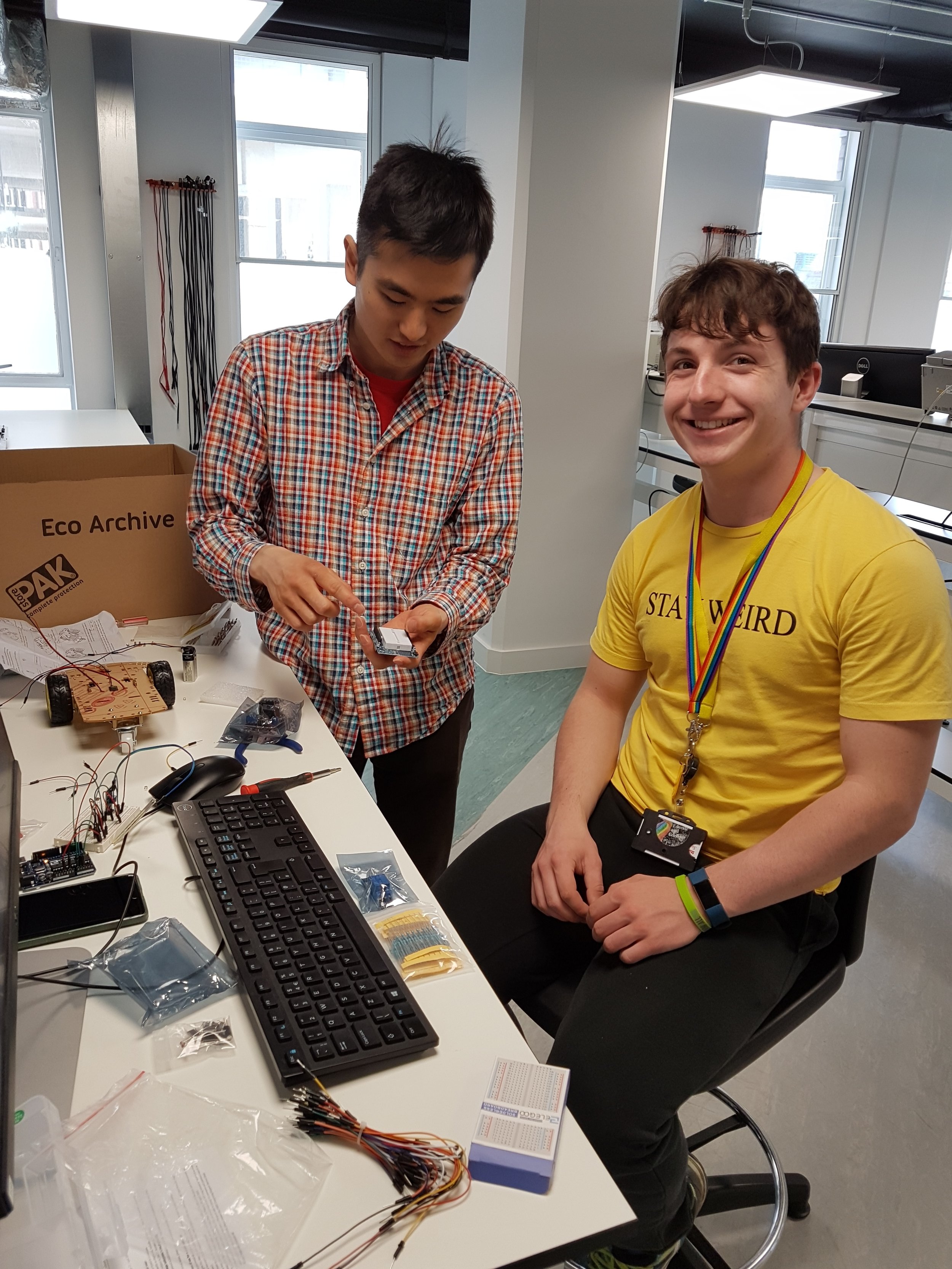
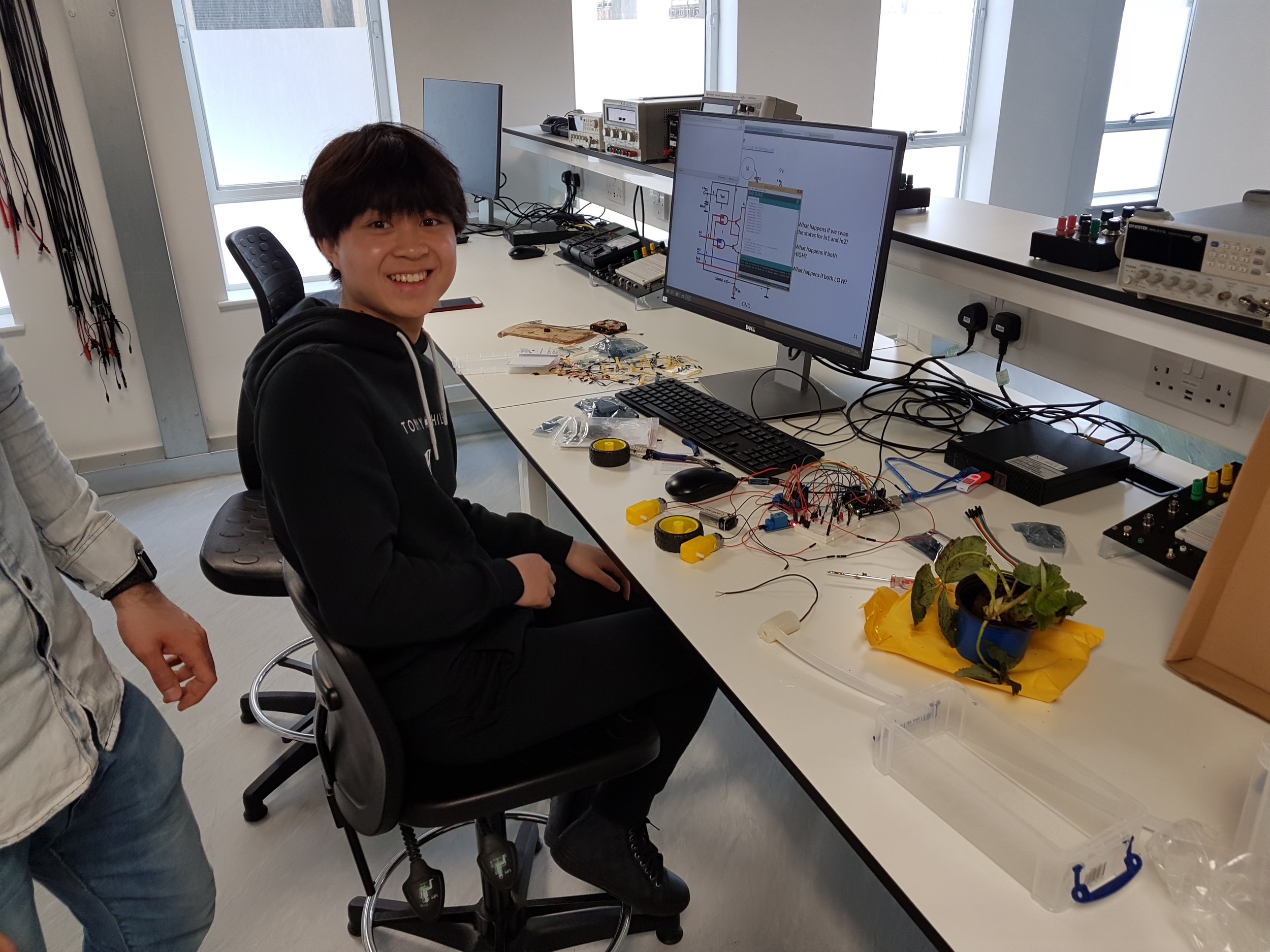
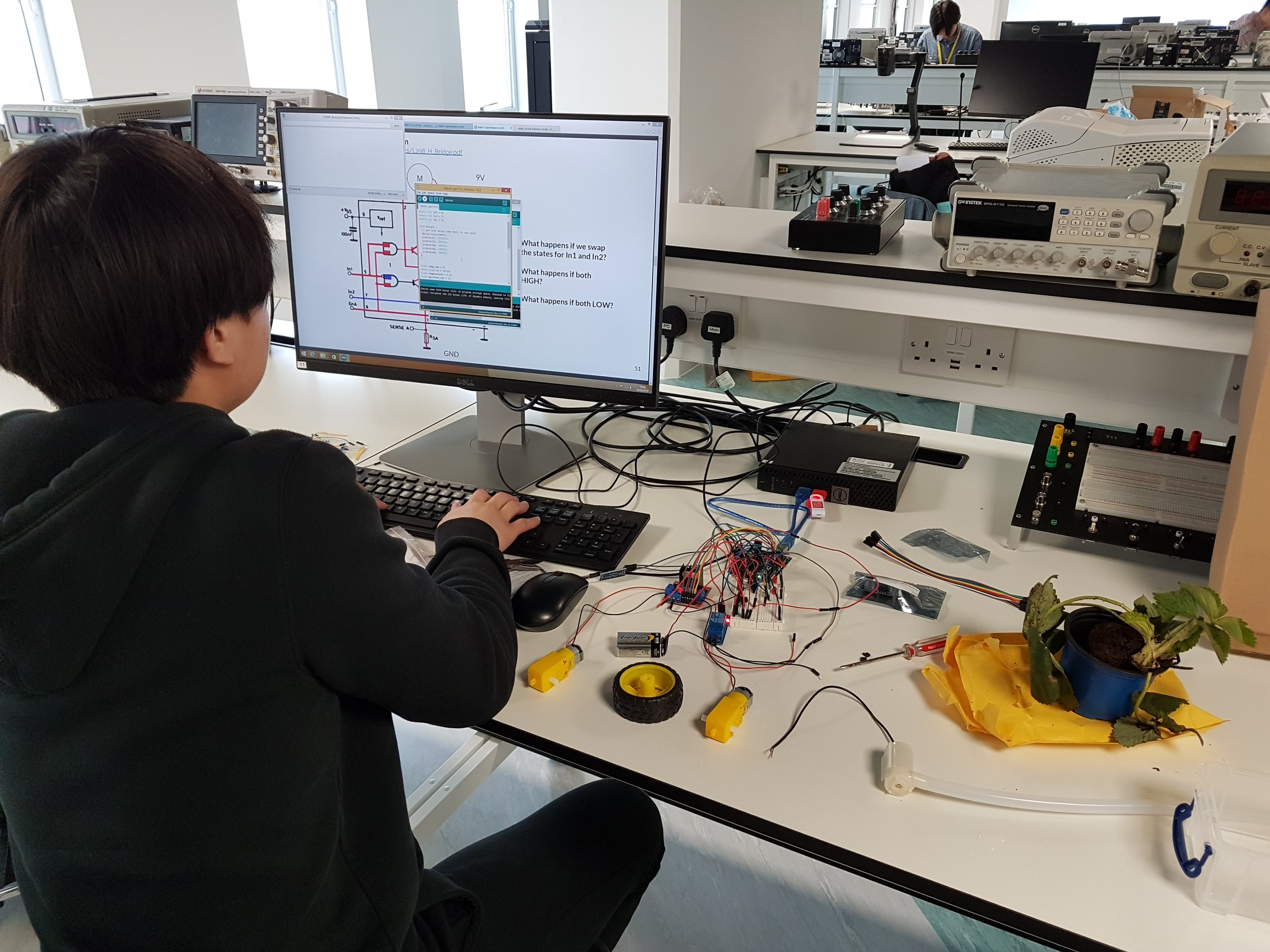
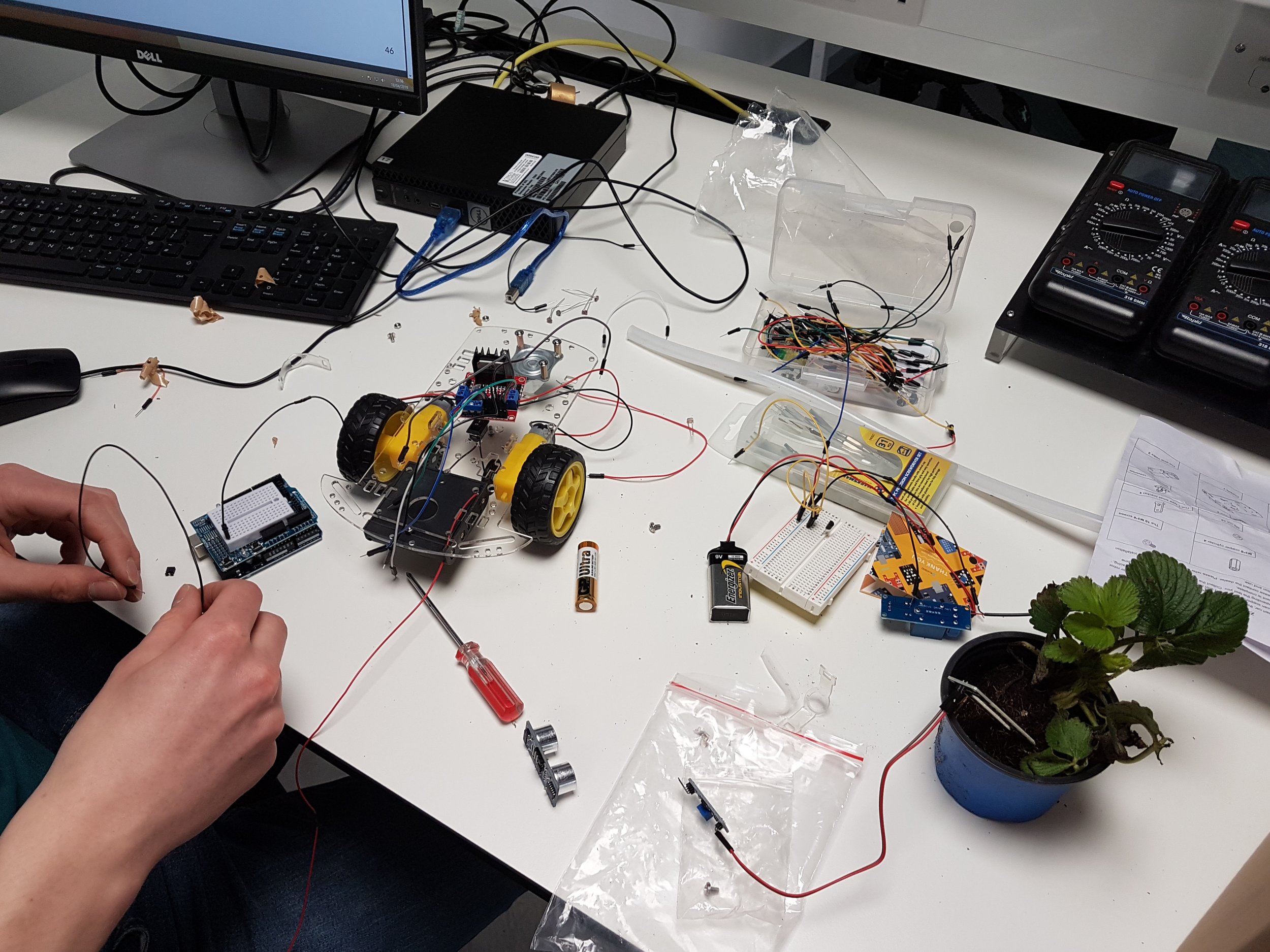


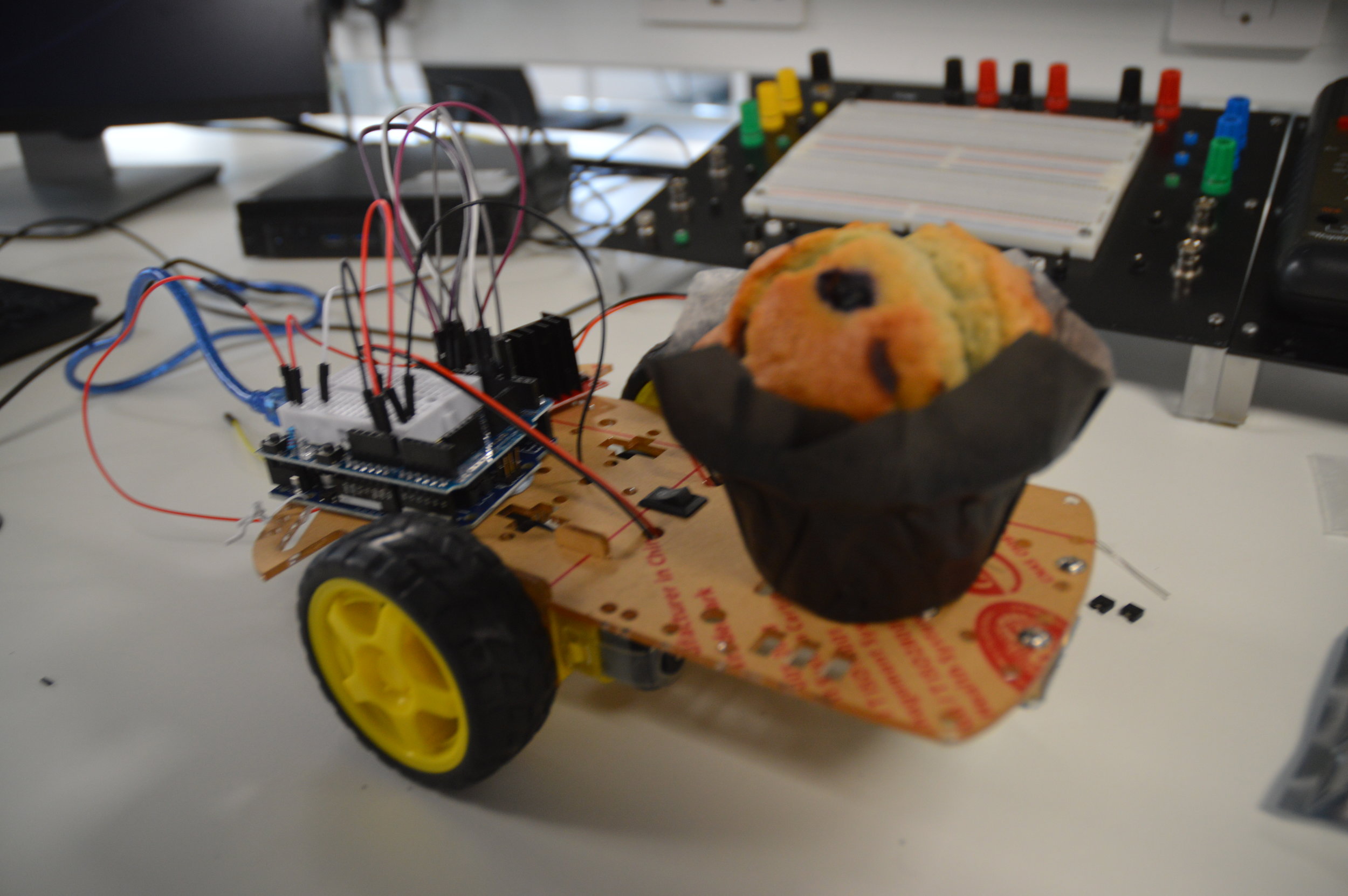
In 2019, again during my PhD, I decided to bring back the GROWBOTICS workshop one last time.
9 students from 4 schools joined us for a two day workshop, where they built a plant monitoring and watering system, and a light-seeking mobile robot that could carry a plant toward better growing conditions.
This time I was joined by a volunteer TA team: teaching fellow Jamie Barras, PhD student Tsvetan Jivkov, MSc student Genki Miyauchi, and BSc student Priya Pillaipakkam Madapusi. They all put in a great effort helping the students, reflected in the student feedback noting great support from the teachers.
Similar to the previous iteration, these workshops were supported by a mix of academic and industrial sources - KCL Centre for Doctoral Studies, Science Gallery London, and New Forest Fruit. Support from KCL was made available through a Public Engagement grant that is advertised to all PhD students in Kings, support from Science Gallery London came through a grant I won during a public engagement course I took in 2017 and discussed previously, and support from New Forest Fruit came about over a chance meeting with their great management team at the AHDB SmartHort conference where I was a speaker. Many thanks to all sponsors, and of course the great staff in the KCL department offices who were a great help with logistics.
Following on with the same goals as the last run of the workshops, I wanted to teach the students something new, encourage students who are making decisions on their future education direction toward STEAM (leading to a target age group of ~16 year olds), specifically encourage these students towards robotics. and encourage them to consider the application of robotics to areas they might not have previously considered, i.e. promote research in Horticultural/Agricultural automation.
Reflecting on how the previous workshops ran, some things stayed the same, but many things were changed. The biggest change was opting to use Arduinos as the project platform. Lego MindStorms is great for quick prototyping of all sorts of devices, but ultimately unless the students are in the position to buy a ~£200 kit themselves, they wouldn’t be able to develop on what we show them in their own time. Arduinos (and Raspberry Pis, microbits, etc.) are great on this front - they’re cheap, widely available, and the students learn practical skills in developing projects with standard electronics.
Thanks to the funding I received, I was able to provide each student with a ~£40 starter kit containing an Arduino, a bunch of sensors, and a robot to use during the workshops and then take home with them. This was a major improvement to the workshops, as it will hopefully enable the students to explore science and engineering on their own terms, following their interests (much like how I found my own path to Engineering, though components were quite a lot harder to come by back then).
Arduinos were revolutionary in lowering the bar to embedded electronics projects, and it’s brilliant seeing all of the component kits and software tools that have grown around it. A software package that was particularly helpful was Tinkercad Circuits, and online circuit design tool which lets you emulate an Arduino along with connected components. This was great for testing out workshop code, creating images for the slides, and showing students how they can use software tools to help plan out their projects.
Day 1
The first day started an overview of my research to give them some context on the projects, then we dove into introducing the students to programming with Arduinos. Interestingly, all of the students had experience with programming in Python, but none had used an Arduino. This was perfect for us, as it put everyone on an even playing field, let us explain Arduino programming concepts with reference to the Python equivalents (or differences), and ensured the main objective of teaching the students something new would be met.
After a morning of fighting against variable definitions, semi-colons and curly braces (thank you Python..), the students had got to grips with the serial monitor and had LEDs blinking away (the hello world of Arduino, something which always excites people new to working with electronics + code).
At this point we took a lunch break, followed by a tour of the labs. They seemed to enjoy seeing the research side of the university, and were able to get hands-on with some of the wearables tech my colleague Samuel Pitou is researching.
In the afternoon session we turned to the main project for the day, a plant monitoring and watering system. This project tied together the morning’s concepts, variables, control structures, and Arduino I/O. Each student was given a strawberry plant (from New Forest Fruits!), a moisture sensor, temperature sensor, a photo resistor, a relay module, and a water pump.
Over the course of the workshop, the level of detail in the instructions given to the students decreased (and we told them it would) to encourage them to find answers online - ultimately we can’t come close to showing them all they might want to know, so figuring out where to find answers was itself an important skill for them to learn, e.g., the slides covered voltage dividers for the photoresistor, but provided no information on how to use the temperature sensor - they had to dig this info out themselves by searching for the sensor details.
By the end of the day, most of the students had managed to get it all wired up and had developed a basic controller. Hopefully they continue adding to the system and their plants thrive!
As is tradition (and good practice), feedback sheets were handed out at the end of the first day to help gauge the course content, delivery, and pace to see if adjustments were needed for the second day, and happily it was very positive. Using a 10-point scale, the pace of the workshop was rated 5.78 (where 0 is too slow, 10 is too fast), the workshop content was rated 9.11 (where 0 is low, 10 is high), difficulty of exercises was rated 6.44 (where 0 is too easy, 10 is too hard), and overall the day was rated 9/10. Numbers aside, some of the students comments were really nice and rebuffed the importance of running public engagement events like this.
Day 2
The second day started with an engaging discussion with New Forest Fruits MD, Sandy Booth. NFF are the first strawberry growers in the UK commercially trialling a picking robot from Belgian company Octinion. Sandy shared his views on robotics in the industry and the challenges faced by growers in sourcing labour, and the students were keen to ask questions on what conditions were needed for their strawberry plants to grow optimally (Sandy was able to provide a good few pro-tips on this as you might expect!).
Following this we continued on to the second project - the mobile GROWBOT. This began with a crash course on H-Bridges for controlling their robot’s motors, before letting them loose on creating a light-chasing robot. This project mostly built on the fundamentals they had learned yesterday, but an additional session after lunch covered finite state machines to help the students plan out their robot’s logic.
In the end, all of the students had a moving mobile robot and quite a few had made a good effort at developing a controller that would let their robot chase light. One of the main challenges they faced during the build was fitting the voltage divider circuits required for their photoresistors into the small breadboard on the robot, along with the H-Bridge wiring - many lessons were learned this day on clean wiring!
Judging from the second day feedback sheets the students really enjoyed the course, with pace, quality, difficulty, and overall ratings of 5.89, 9.33, 6.78, and 9.33 respectively - a successful outcome for the workshops!
Some quotes from the students:
The support from the teachers was amazing and I really enjoyed myself. I learnt a lot throughout the 2 days.
It was extremely well-organised and help was always at hand. It was absolutely fabulous.
I am really glad I took this course. I have learned a lot of new skills.
Overall very inspiring
.
Looking back at what was achieved with this workshop, I’m very pleased with how things turned out. Things were learned, experiences were had, objectives were achieved. A big thank you to the volunteer TA’s, sponsors, KCL staff who helped with all of the logistics, and everyone who spread the word to get applications in the first place.
An important lesson learned was related to advertising the course and the timing - while the half-term presents some free time in students’ calendars, many also have exams straight after the break. Kudos to the students for still making it to the workshop, but retrospectively having the workshop take place during the first week of half-term would probably place less pressure on students who have to study for exams.
With any luck, I’ll run similar events in future. Watch this space…
Feedback
All Student Feedback (See for all student comments)
Slides
Code
Day 2 Code (mobile growbot) (Note there’s a file of encoder related functions in here that is meant to let you use a photoresistor + LED as an encoder with the robot chassis, but the code is not 100% currently).
Solution files for some of the exercises in the slides (Exercise 2_2 is a larger Noughts & Crosses project, try extend this to use LEDs that display the board state!)
Contact Details
Any questions, please contact me at aran[dot]sena[at]kcl[dot]ac[dot]uk
Workshop Team
Aran Sena
Jamie Barras
Tsvetan Jivkov
Genki Miyauchi
Priya Pillaipakkam Madapusi
Sponsors
KCL Centre for Doctoral Studies
Science Gallery
New Forest Fruits
Many thanks!









